CPU Coolers: Stock vs Aftermarket vs Liquid Cooling
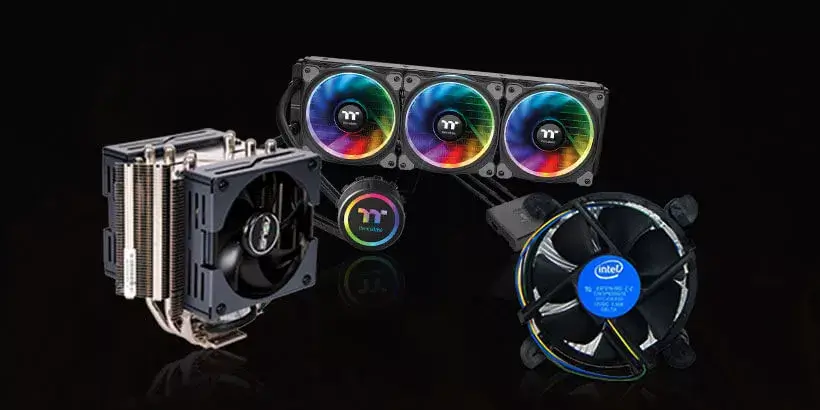
A CPU cooler is one of computer components designed to dissipate the heat away from CPU, which can improve the efficiency, stability, and lifespan of system. When purchasing a boxed CPU, there will be a CPU and a CPU cooler bundled in the box and the CPU cooler is the stock cooler. Generally, it is enough to meet the need of CPU cooling. However, some people prefer to purchase an aftermarket cooler to replace stock cooler. So, what's the differences between stock and aftermarket CPU cooler? In other case, some people select liquid cooling as CPU cooler. What about the differences between fan and liquid cooling? In this post, we will discuss the differences between stock fan, aftermarket fan and liquid cooling from the following aspects and make them clear.
1. Price
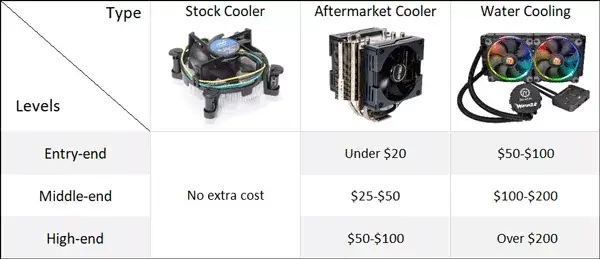
Undoubtedly, stock cooler is bundled with the CPU and it doesn't need an extra cost. In terms of aftermarket cooler, different levels of aftermarket coolers vary in prices. In general, the aftermarket cooler for $20-$40 is sufficient for the heat cooling of CPU for below $300. The upper-end CPU cooling cooler cost somewhere between $50 and $100. As for liquid cooling, one of downsides is relatively high cost. The price for average liquid cooling is around $150 and even some high-end ones are over $200. Under the circumstance of the same cooling performance, fan cooling costs much less than liquid cooling.
2. Cooling Performance
In order to compare the cooling performance of these three CPU coolers more clearly and straightforwardly, we use CPU monitoring software to test the temperature of CPU with three different CPU coolers in the idle and full load conditions.
Here are the configurations of test computer.

Firstly, we test the CPU temperature when CPU is idle.
| CPU status | Idle |
| CPU monitoring software | HWMonitor |
-
Stock cooler:

-
Aftermarket cooler ($20):

-
Liquid cooling ($60):
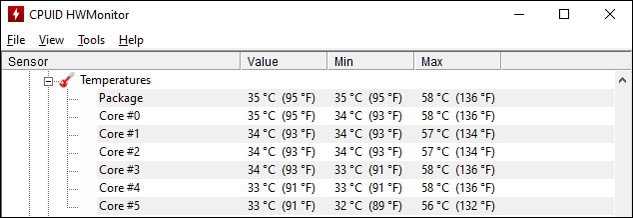
As we can see from the above figures, when CPU is idle, the temperatures of CPU with three different CPU coolers are almost the same, which indicates that the performance of these three CPU coolers is almost the same when the CPU is idle.
Then, we test the CPU temperature when CPU is full.
| CPU status | Full |
| CPU monitoring software | HWMonitor |
| Running software | iSunshare Office Password Genius |
| Test time | After program running for 5 mins |
-
Stock cooler:
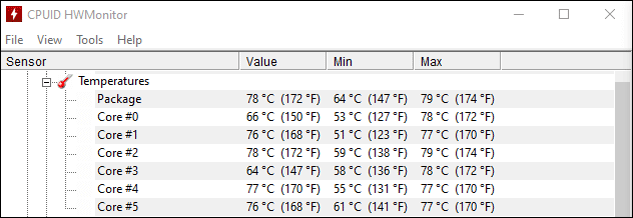
-
Aftermarket cooler ($20):

-
Liquid cooling ($60):
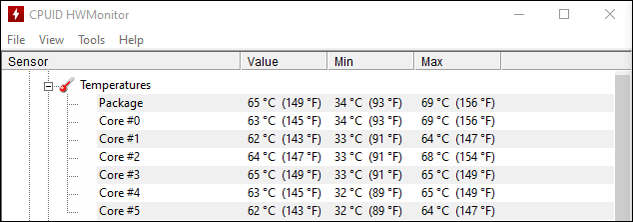
As can be seen from the figures, when CPU is at full load, the temperature of CPU with stock cooler is about 10 degrees higher than that of CPU with the other two CPU coolers. The temperatures of CPU with aftermarket cooler and liquid cooling have little difference. It shows that the cooling performance of stock cooler is the worst when CPU is full. The cooling performance of aftermarket cooler is similar to that of liquid cooling.
In summary, the aftermarket cooler provides improved cooling performance over stock cooler by using copper base plates to spread heat through pipes. The performance of some low-end water cooling systems make no difference to that of aftermarket cooler. Even the price of liquid cooling is much higher. Of course, the performance of high-end water cooling is still dramatic powerful, especially in the case of high-end computer and CPU overclocking.
3. Noise Pollution
The noise from computer is mainly caused by the high-speed rotation of the cooling fans. Especially when running a large program, the whistling sound of computer fan can make you annoying, which is inevitable for stock and aftermarket coolers. Of course, the better aftermarket cooler makes less noise but it's still not as good as the water cooling. One of the most outstanding advantages of water cooling is less noise pollution. Although there is also a fan in water cooling system, the cooling of it mainly depends on the strong specific heat capacity of water, which makes much less noise pollution. Especially when the CPU is at full load or overclocking, the performance of both stock and aftermarket CPU cooler is so much poorer while the noise pollution of water cooling is almost zero.
Summary
Although the stock cooler doesn't need extra cost, its cooling performance is so poor and it is noisy when the CPU is at full load. If you want to save money, the stock CPU cooler is enough for daily use. If you want to improve the performance of CPU cooling, the aftermarket cooler also has a high cost-performance ratio and a wide range of selections, which is worth considering. One of the most outstanding upsides of liquid cooling is much less noise pollution. Although its cooling performance is so excellent, its price is much higher. Generally, it is recommended to the high-end players.




















